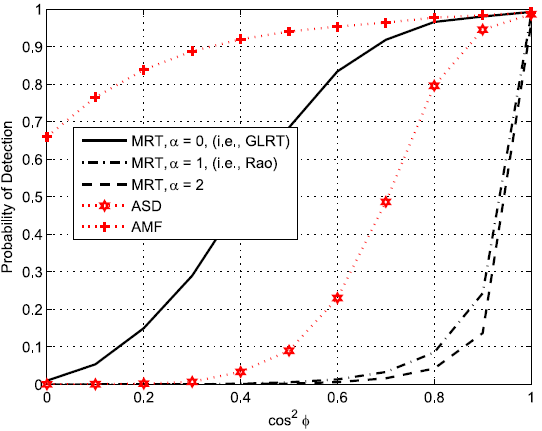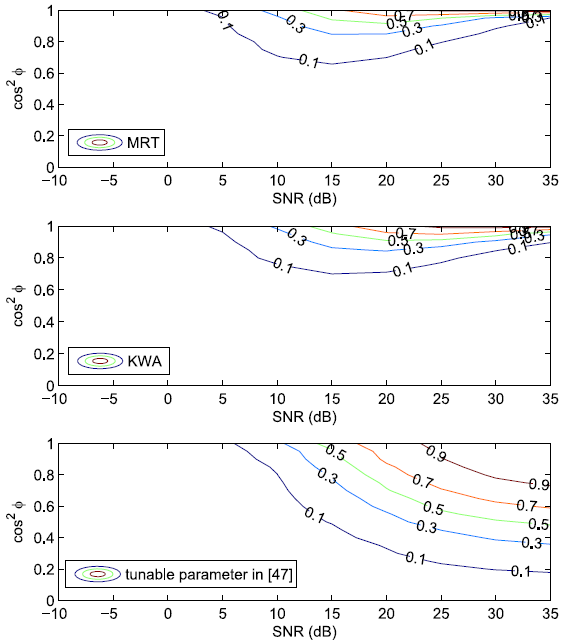Multichannel signal detection is encountered in a wide variety of applications. In radar systems, sensor arrays are often used to facilitate the so-called space-time adaptive processing. It can offer enhanced target discrimination capability compared with space- or time-only processing. And in remote sensing systems, multispectral sensors are used to collect spectral information across multiple spectral bands. It can also be exploited for classification of different materials or detection of man-made objects on the ground. Other examples of applications include wireless communication, sonar, audio and speech processing, and seismology.
Note that detectors have been developed for the matched case where the target signal is perfectly matched to the assumed steering vector. Yet, in practice, mismatch of the signal steering vector may exist due to many factors such as wavefront distortions, calibration and pointing errors, and imperfect antenna shape.
Recently, researchers from research institutes and universities from home and abroad propose a modified Rao test for multichannel adaptive signal detection by introducing a tunable parameter. The tunable Rao test can offer a tradeoff between the two performance metrics for matched and mismatched signals.Their research findings have been published in the IEEE Transactions on SignalProcessing.
For the Rao test, it is well-known design criteria, which may yield decision schemes more robust/selective than the generalized likelihood ratio test in the presence of mismatched environments or requiring a smaller computational complexity.
In their research, a simple derivation of the Rao test is presented by using both the test and training data in the noise correlation estimation. This derivation offers an additional insight that the detection probability of the subspace Rao test does not necessarily increase with the signal-to-noise ratio.
Moreover, the modified Rao test subsumes the generalized likelihood ratio test and Rao test as particular cases. The proposed modified Rao test is notably different from the existing tunable detectors, which are designed for rank-one signal detection but cannot be used for multi-rank subspace signal detection.
The performance of the proposed modified Rao test is evaluated in terms of the probabilities of false alarm and detection. It is shown that the proposed modified Rao test has the constant false alarm rate property with respect to the noise covariance matrix. In practice, the detection threshold of the modified Rao test can be easily set by using the closed-form expression for the probability of false alarm.
Simulation results reveal that the mismatched signal rejection capabilities of the proposed modified Rao test can be flexibly adjusted. Specifically, the mismatched signal rejection capabilities improve as the tunable parameter increases, as shown in Fig. 1. When the tunable parameter is sufficiently large, the rejection performance of the proposed modified Rao test is better than that of its counterparts.
Funding for this research came from the National Natural Science Foundation of China under Contracts 61501351, 61571349, 61501505, 61571434, and 61372132, the Program for New Century Excellent Talents in University (NCET-13-0945), and the Fundamental Research Funds for the Central Universities (XJS14039), and the National Science Fund for Distinguished Young Scholars under Grant 61525105.

Fig.1 Mismatched Detection performance for SNR = 15 dB (Image by HAO)

Fig.2 The rejection performance for the proposed MRT, the KWA and the tunable detector (Image by HAO)
Reference:
LIU Jun, LIU Weijian, CHEN Bo, LIU Hongwei, LI Hongbin, HAO Chengpeng. Modified Rao Test for Multichannel Adaptive Signal Detection. IEEE Transactions on signal processing (Vol. 64, No. 3, 2016, pp. 714-725). DOI: 10.1109/TSP.2015.2491892
Contact:
HAO Chengpeng
Institute of Acoustics, Chinese Academy of Sciences, 100190 Beijing, China
Email: haochengp@mail.ioa.ac.cn


